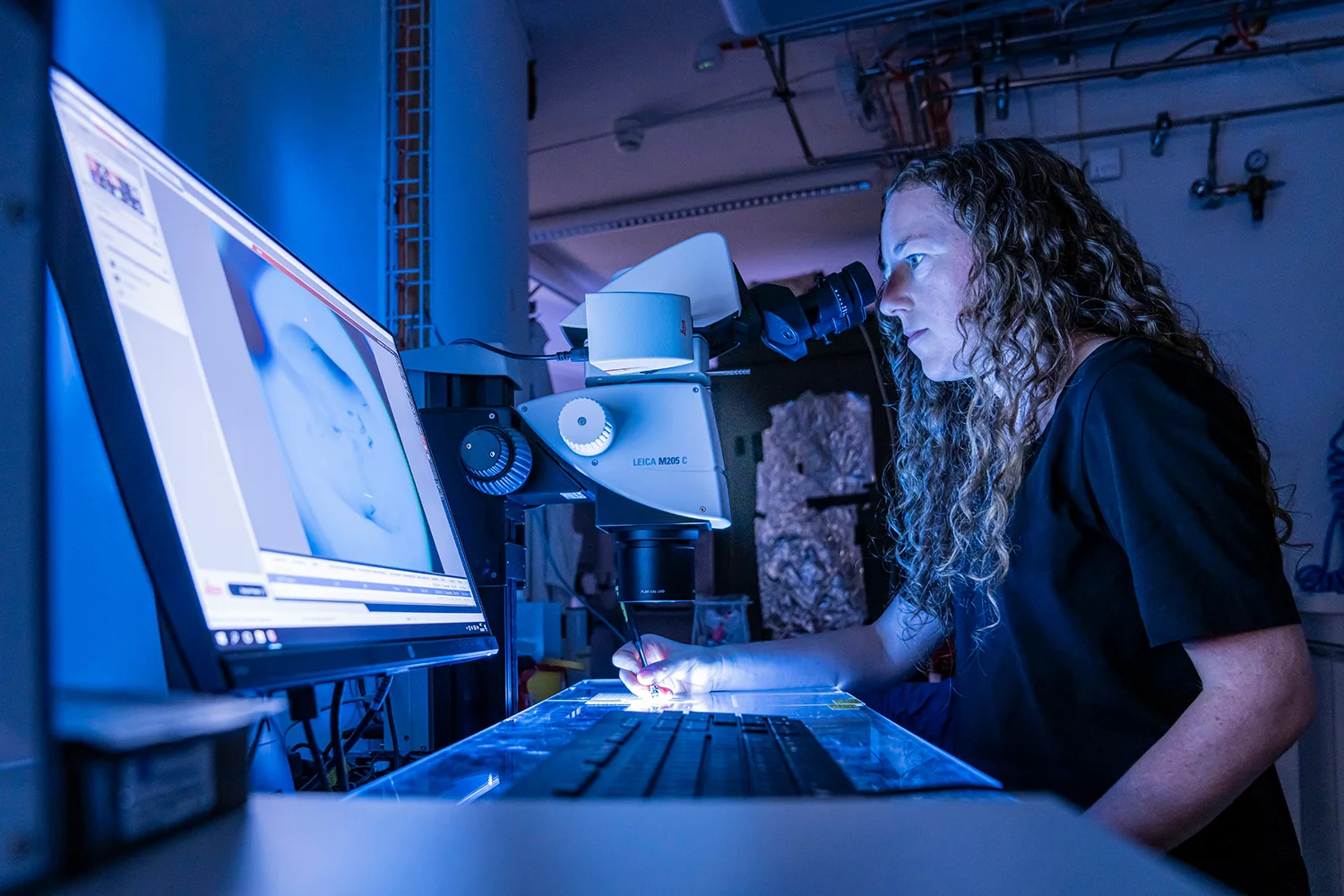Researchers at Goethe University Frankfurt, in cooperation with the Paul Scherrer Institute PSI, have probably discovered another, previously unknown mechanism of action of the antiviral remdesivir. Using structural analyses, they have discovered that a decomposition product of the virostatic agent remdesivir binds to the viral protein nsP3 of Sars-CoV-2. This protein helps the virus suppress host cell defence mechanisms. The discovery may be important for the development of new drugs to combat Sars-CoV-2 and other RNA viruses.
The virostatic agent remdesivir disrupts an important step in the propagation of RNA viruses, to which Sars-CoV-2 also belongs: the reproduction of the virus’s own genetic material. This provides the blueprint for the production of new virus particles by the host cell and is present as RNA matrices. To accelerate their reproduction, however, RNA viruses cause the RNA matrices to be copied. To do so, they use a specific protein of their own (an RNA polymerase), which is blocked by remdesivir. Strictly speaking, remdesivir does not do this itself, but rather a substance that is synthesized from remdesivir in five steps when the active agent penetrates a cell.
In the second of these five steps, an intermediate is formed from remdesivir, a substance with the somewhat unwieldy name GS-441524 (in scientific terms: a remdesivir metabolite). GS-441524 is a virostatic agent as well. As the scientists in the group headed by Stefan Knapp from the Institute for Pharmaceutical Chemistry at Goethe University Frankfurt have discovered, GS-441524 targets a Sars-CoV-2 protein called nsP3.
nsP3 is a multifunctional protein, whose tasks include suppressing the host cell’s defence response. The host cell is not helpless in the face of a virus attack, but activates inflammatory mechanisms, among other things, to summon the aid of the cell’s endogenous immune system. nsP3 helps the viruses suppress the cell’s calls for help.
Professor Stefan Knapp explains: "GS-441525 inhibits the activities of an nsP3 domain which is important for the reproduction of viruses, and which communicates with human cellular defence systems. Our structural analysis shows how this inhibition functions, allowing us to lay an important foundation for the development of new and more potent antiviral drugs – effective not only against Sars-CoV-2." The target structure of GS-441524 is very similar in other coronaviruses, he adds, for example Sars-CoV and MERS-CoV, as well in a series of alphaviruses, such as the chikungunya virus. For this reason, the development of such medicines could also help prepare for future virus pandemics.
The researchers carried out their measurements to decipher the protein’s crystal structure at PSI’s Swiss Light Source SLS. Since the beginning of the pandemic, measurements related to Covid-19 have priority at SLS. PSI had called for proposals to enable rapid access for beamtime.
"This study is a great example of how beamtime was used to advance Covid-19 research," says May Sharpe of PSI's Macromolecules and Bioimaging Laboratory and co-author of the publication. "We were very pleased to support our colleagues at Goethe University Frankfurt and look forward to further collaborations in the future."
Based on a media release from Goethe University Frankfurt with additions from the Paul Scherrer Institute
Contact
Prof. Dr. Stefan Knapp
Institute for Pharmaceutical Chemistry and Buchmann Institute for Molecular Life Sciences
Goethe University Frankfurt, Germany
Telephone: +49 69 798-29871, e-mail: knapp@pharmchem.uni-frankfurt.de
Dr. May Elizabeth Sharpe
Group Leader MX samples
Laboratory of Macromolecules and Bioimaging
Paul Scherrer Institute, Forschungsstrasse 111, 5232 Villigen PSI, Switzerland
Telephone: +41 56 310 54 37, e-mail: may.sharpe@psi.ch [English]
Further information
Covid-19 research: Anti-viral strategy with double effect
Original publication
Structural Insights into Plasticity and Discovery of Remdesivir Metabolite GS-441524 Binding in SARS-CoV‑2 Macrodomain
X. Ni, M. Schröder, V. Olieric, M.E. Sharpe, V. Hernandez-Olmos, E. Proschak, D. Merk, S. Knapp, A. Chaikuad.
ACS Medicinal Chemistry Letters, 16.03.2021 (online)
DOI: 10.1021/acsmedchemlett.0c00684
Copyright
PSI provides image and/or video material free of charge for media coverage of the content of the above text. Use of this material for other purposes is not permitted. This also includes the transfer of the image and video material into databases as well as sale by third parties.


